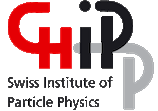Speaker
Description
I discuss the two-Higgs doublet model extended by a complex singlet and an additional U(1) gauge group (N2HDM-U(1)) and compare it to the standard two-Higgs doublet model with Z2 symmetries (N2HDM-Z2). We show that the N2HDM-U(1) is more predictive as it has one less free parameter, is CP conserving, and involves only spontaneous symmetry breaking. We then examine the phenomenological consequences for the Large Hadron Collider. In particular, we find that a sizable branching ratio of scalar decays to two different Higgses is possible in N2HDM-U(1), which is generally suppressed in N2HDM-Z2 for small scalar mixing. This is particularly relevant in light of the CMS excess in Higgs pair production at around 650 GeV decaying a Standard Model Higgs decaying to photons and a new scalar with a mass of ≈ 90 GeV decaying to bottom quarks.
| My contribution is about a project related to sustainability | No |
|---|---|
| Field of contribution | Particle physics |

